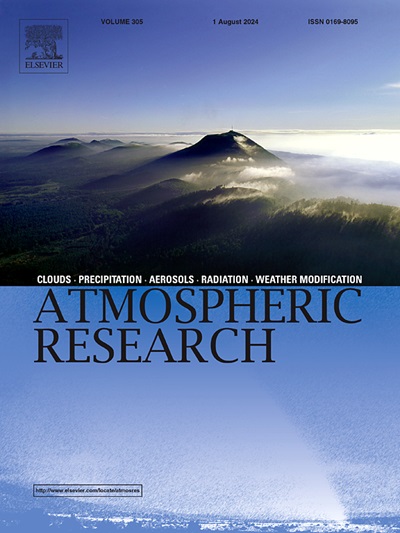Severe constraints on water vapor diffusion due to the shrinkage of the Aral Sea
IF 4.5
2区 地球科学
Q1 METEOROLOGY & ATMOSPHERIC SCIENCES
引用次数: 0
Abstract
The Aral Sea has undergone dramatic shrinkage over the past half-century, losing approximately 87 % of its water body, yet how this shrinkage affects the local climate remains unclear. In this study, the effects of the Aral Sea on lake-land breeze circulation and associated water vapor diffusion were assessed by comparing two simulations, before and after the Aral Sea's shrinkage, using the Weather Research and Forecasting (WRF)-Noah regional climate model. The results show that the WRF model performs relatively well in simulating daily maximum, minimum, and mean temperatures with coefficients of determination (R2) larger than 0.75 and root mean square error (RMSE) less than 20 %, though a neutral performance was exhibited for relative humidity and wind speed, with R2 values ranging from 0.4 to 0.8, and RMSE between 20 % and 60 %. Additionally, the results indicate that water vapor diffusion is substantially inhibited in both intensity and spatial extent following the shrinkage of the Aral Sea, with a maximum reduction of nearly 300 km in horizontal moisture diffusion along the southeast edge of the Aral Sea before its shrinkage, as well as a reduction of nearly 2.5 km in vertical moisture diffusion. Our findings highlight the critical need for protective measures to conserve the Aral Sea's water resources and mitigate the potential exacerbation of the region's ecological crisis.
求助全文
约1分钟内获得全文
求助全文
来源期刊

Atmospheric Research
地学-气象与大气科学
CiteScore
9.40
自引率
10.90%
发文量
460
审稿时长
47 days
期刊介绍:
The journal publishes scientific papers (research papers, review articles, letters and notes) dealing with the part of the atmosphere where meteorological events occur. Attention is given to all processes extending from the earth surface to the tropopause, but special emphasis continues to be devoted to the physics of clouds, mesoscale meteorology and air pollution, i.e. atmospheric aerosols; microphysical processes; cloud dynamics and thermodynamics; numerical simulation, climatology, climate change and weather modification.
 求助内容:
求助内容: 应助结果提醒方式:
应助结果提醒方式:


